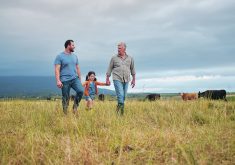I met Joe Kluender at a conference in Sacramento, California, years ago. He is now retired from a well-respected career in farm business management consulting. His company, Farm Family Dynamics, was located in Minnesota. He and I collaborated on different things. The main thrust of the following article is taken from work originated by Joe.
As family farms grow, operations grow to support lifestyles. This growth is often visible: bigger machinery, larger grain storage, more land, more animals. Typically, the management system — that invisible part of the farm —does not advance. The associated risk may be the biggest threat to the continuance of any farm’s legacy.
Many family farms do not recognize that their management system is not keeping pace with the growth of their family and business structure. The family farm starts with an entrepreneur who works hard and builds a successful farming operation. As their children join the farm, operations continue to grow. The operation is often restructured for tax purposes, or to comply with government programs.
Seldom is the farm’s continuance (its legacy) taken into consideration until the third generation becomes involved.
At that point, there can be many people involved with several business entities and land ownership structures in place, even though management’s decisions are still made by consensus (often around the kitchen table).
There can be different ways to illustrate the progression of risk associated with lagging investment in management system development. The legacy risk formula can be used to evaluate and illustrate the “risk” of the family farm’s legacy.
The formula is:
Family (+) business (-) management systems = risk. A lower score is desirable.
Family — Family is the number of people involved in a farm operation (including spouses and partners).
Business — Businesses are the number of business entities and associated financial statements and tax returns.

Management systems — Management systems are the formal structures that exist in a farm business. The following list does not include all the different systems that can be put in place. They can include:
- written goals
- vision and value statements
- organizational charts
- human resource structures such as employee policies and job descriptions
- family employment policies
- written point of entry for the next generation
- buy-sell agreements
- written transition plan
- written strategic plans
- specific management and owner’s meetings
- internal and external communication plans
- central office (not the kitchen table)
- financial targets and investment guidelines
- advisory board
- chief executive officer and chief financial officer roles
- management / professional development plans
- estate plans
- wills, power of attorney
Terry Betker, PAg, is a farm management consultant based in Winnipeg. He can be reached at 204-782-8200 or terry.betker@backswath.com.

















